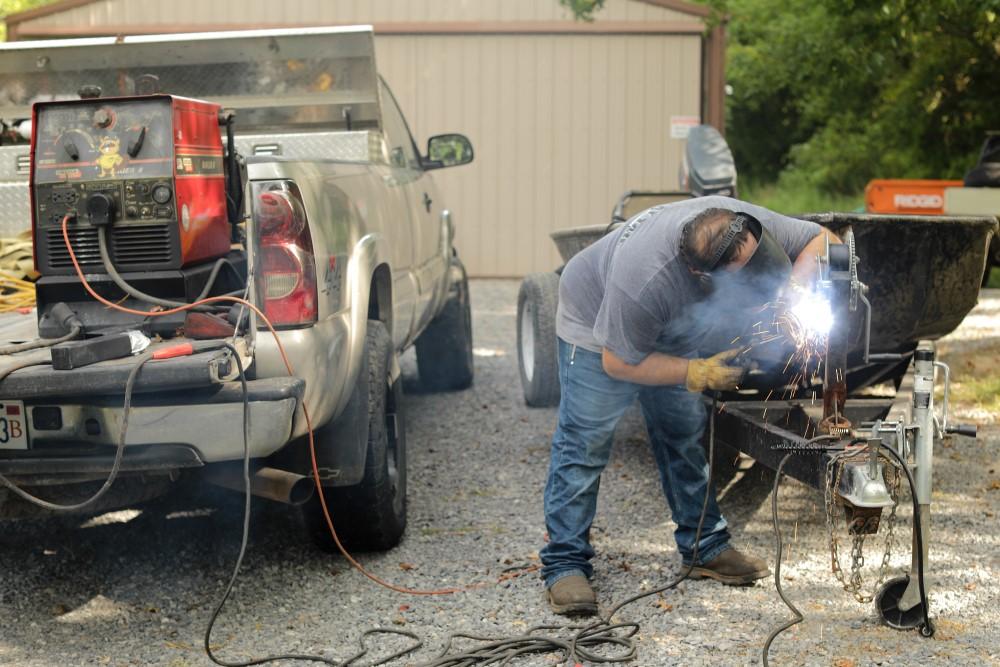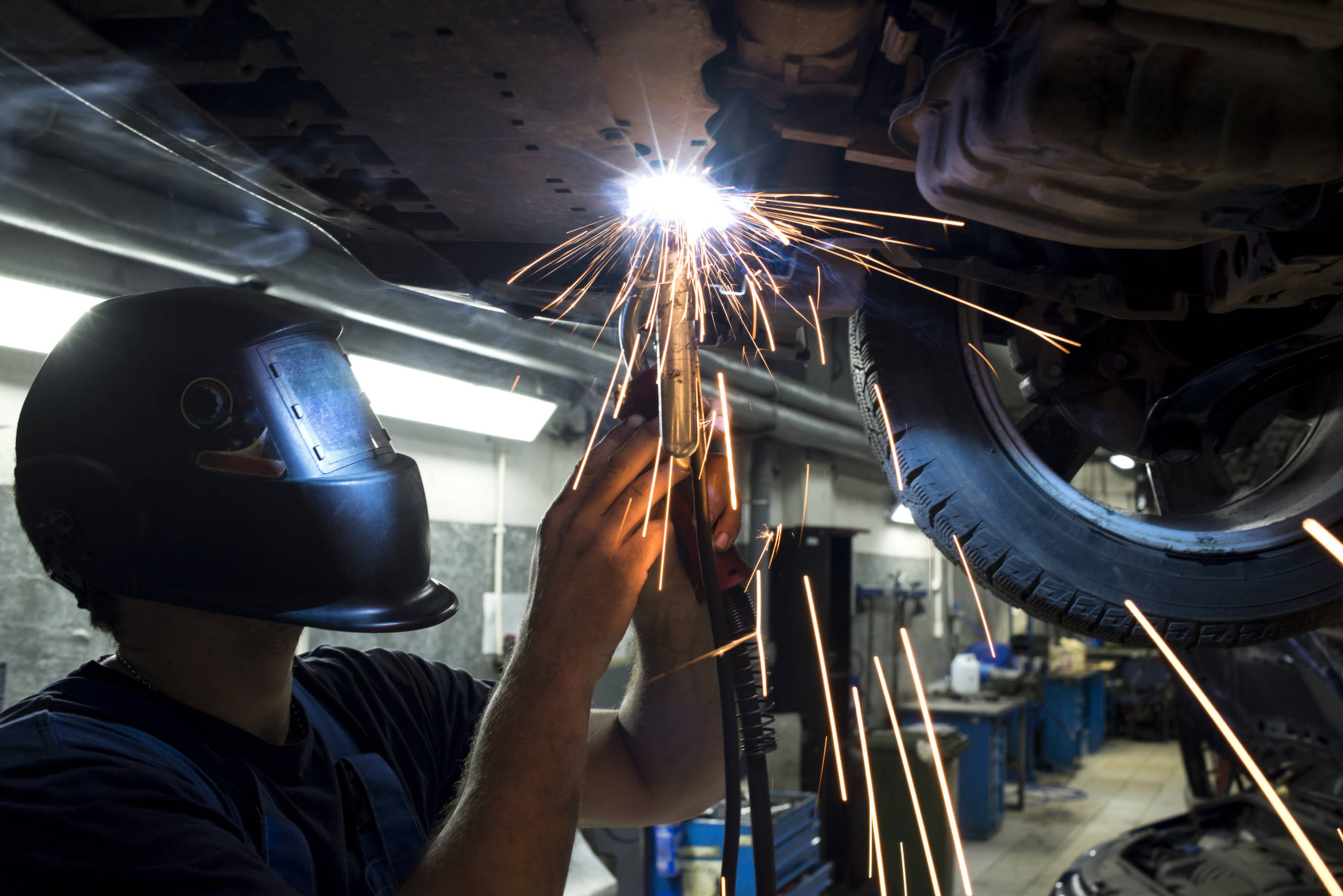Usual Welding Repair Service Issues and Exactly How to Address Them Properly
Welding fixings commonly experience an array of problems that can endanger the honesty of the end product. Usual troubles consist of inadequate penetration, porosity, and imbalance, among others. Each issue provides special difficulties that require specific approaches for resolution. Recognizing these concerns is important for welders aiming to improve their abilities and outcomes. This discussion will explore these typical welding repair service issues and effective techniques to resolve them.
Insufficient Infiltration
Insufficient infiltration occurs when the weld metal fails to totally fuse with the base material, leading to weak joints and possible structural failures. This issue typically comes from inadequate heat input, incorrect electrode angle, or inappropriate welding speed. Welders may come across inadequate penetration because of a mistake of the required criteria for a particular product density or type. In addition, contamination on the base material's surface area can impede reliable bonding, exacerbating the issue. To resolve poor infiltration, welders should ensure suitable settings on their devices and keep a clean job surface. Routine examination of welds is advised to recognize any type of shortages early, permitting prompt modifications and the prevention of compromised architectural stability in bonded assemblies.
Porosity
Porosity is an usual flaw in bonded joints that shows up as small gas bubbles trapped within the weld steel. This flaw can endanger the stability of the weld, resulting in lowered toughness and possible failing under anxiety. Montana Mobile Welding and Repair. Porosity normally arises from contamination, wetness, or improper welding methods, which permit gases to leave into the liquified weld pool. To attend to porosity, welders need to assure correct surface preparation, maintain a clean working environment, and utilize ideal welding parameters. Furthermore, picking the ideal filler product and protecting gas can reduce gas entrapment. Normal assessment and testing of welds can assist identify porosity early, ensuring timely corrective actions are taken, consequently maintaining the top quality and dependability of the bonded structure
Misalignment
Misalignment in welding can occur from numerous elements, consisting of improper configuration and thermal growth. Understanding the root triggers is necessary for efficient resolution. A number of improvement methods are available to realign elements and ensure architectural stability.
Root causes of Imbalance
Welding misalignment often comes from a range of underlying concerns that can endanger structural integrity. One main cause is inappropriate fit-up of parts before welding, which can result in spaces and unequal surface areas. Variations in thermal expansion during the welding procedure can likewise lead to distortion, particularly if the materials being signed up with have various coefficients of expansion. Furthermore, poor clamping and fixturing might stop working to hold elements safely in position, resulting in movement during welding. Improperly conserved equipment, consisting of welding makers and devices, may introduce variances in the weld grain, further adding to misalignment. Driver error, stemming from not enough training or experience, can likewise play a substantial duty in developing misaligned welds.

Improvement Strategies Readily Available
Attending to imbalance successfully calls for a mix of corrective methods tailored to the details problems handy. One usual method is the usage of fixtures or jigs to hold elements in the appropriate placement throughout welding, ensuring constant positioning. Additionally, preheating the products can aid decrease distortion and boost fit-up. For substantial imbalance, mechanical realignment techniques, such as utilizing hydraulic jacks or clamps, can be used to remedy the placement prior to welding. Post-weld warm therapy may likewise be essential to ease stresses brought on by imbalance. Mindful assessment and modification during the setup stage can protect against misalignment concerns from becoming substantial troubles, advertising a smoother welding process and enhancing overall architectural honesty.
Distortion
Distortion is a typical difficulty in welding that can arise from various aspects, including unequal heating and air conditioning. Comprehending the reasons for distortion is important for executing reliable prevention techniques. Resolving this issue not just improves structural stability yet additionally boosts the total high quality of the weld.
Root causes of Distortion
When subjected to the extreme heat of welding, products typically undertake modifications that can bring about distortion. This sensation mainly emerges from thermal development and tightening throughout the welding process. As the weld area warms up, the product broadens; upon cooling, it contracts, which can create interior stress and anxieties. Additionally, unequal home heating throughout a workpiece can aggravate these stresses, leading to bending or flexing. The type of material likewise plays a considerable role; steels with varying thermal conductivity and coefficients of growth may respond in different ways, causing uncertain distortions. Furthermore, bad joint design and poor fixturing can add to imbalance during welding, boosting the chance of distortion. Understanding these causes is essential for efficient welding repair work and prevention techniques.
Prevention Techniques
Efficient avoidance techniques for distortion during welding concentrate on controlling warmth input and making certain proper joint design. Preserving a regular warm input helps to lessen thermal expansion and contraction, which can cause distortion. Utilizing methods such as preheating the work surface can likewise reduce the temperature level gradient, advertising uniform heating. In addition, choosing appropriate joint designs, such as T-joints or lap joints, can improve security and lower stress and anxiety focus. Applying correct fixturing to protect the workpieces in position further help in keeping positioning throughout the welding procedure. Ultimately, staggered welding series can disperse warm a lot more evenly, protecting against localized distortion. By using these approaches, welders can significantly lower the likelihood of distortion and improve the overall quality of their welds.
Breaking
Splitting is a typical issue come across in welding fixings, typically resulting from various aspects such as improper cooling rates, product selection, or inadequate joint preparation. The occurrence of cracks can significantly jeopardize the stability of the weld, causing possible failures throughout operation. To address this concern, welders should first analyze the origin causes, ensuring that products are suitable and suitably chosen for the particular application. Additionally, controlling Get More Information the air conditioning price during the welding process is essential; rapid air conditioning can generate stress and lead to splitting. Proper joint style and preparation also contribute to minimizing the threat. Carrying out these approaches can enhance weld high quality and longevity, eventually lowering the probability of cracking in finished weldments.

Incomplete Fusion
A considerable problem in welding fixings is insufficient fusion, which happens when the weld metal does not appropriately bond with the base material or previous weld passes - Fabrication. This problem can lead to weak points in the joint, possibly compromising the stability of the bonded structure. Elements contributing to incomplete combination consist of inadequate warmth input, improper welding method, and contamination of the surface areas being signed up with. To resolve this concern efficiently, welders must ensure proper pre-weld cleaning and surface prep work, in addition to change their welding specifications to accomplish sufficient penetration and combination. Routine assessment throughout the welding procedure can additionally aid recognize incomplete combination early, enabling for prompt corrective steps to enhance the general high quality of the weld
Overheating
While welding fixings can improve structural integrity, overheating presents a significant difficulty that can cause product destruction. Excessive warm throughout welding can alter the mechanical residential or commercial properties of steels, leading to decreased stamina, enhanced brittleness, and bending. This sensation is particularly vital in high-stress applications where architectural integrity is vital. Recognizing overheating can involve visual evaluations for staining or distortion, in addition to checking temperature level throughout the welding process. To reduce the go to my blog dangers linked with overheating, welders should use proper techniques, such as regulating warm input, adjusting traveling speed, and using suitable filler materials. Furthermore, implementing pre- and post-weld warmth treatments can assist recover product buildings and boost the general high quality of the fixing, making sure long-term efficiency and safety and security.
Often Asked Concerns
What Are the Common Signs of a Welding Problem?

How Can I Examine My Welds for High quality?
To test welds for quality, one can utilize visual examinations, ultrasonic screening, and radiographic approaches. Each strategy assures structural stability, determines flaws, and verifies adherence to defined criteria, ultimately enhancing the dependability of the welded joints.
What Security Precautions Should I Take While Welding?
When welding, one must focus on safety and security by putting on ideal individual protective tools, guaranteeing correct air flow, protecting combustible materials away, preserving a clean work area, and understanding environments to prevent injuries and mishaps.
Can I Repair a Weld Without Renovating the Entire Joint?
Fixing a weld without remodeling the entire joint is possible, depending upon the damage (Montana Mobile Welding and Repair Belgrade). Strategies such as grinding, including filler product, or using a welding process can efficiently attend to details problems while maintaining the bordering framework
What Equipment Are Necessary for Efficient Welding Services?
Necessary tools for reliable welding repairs include a welding machine, cable brush, mill, safety equipment, clamps, and filler materials. Each device plays an essential duty in making certain high quality and safety throughout the repair work procedure. Porosity usually develops from contamination, dampness, or improper welding techniques, which allow gases to leave into the liquified weld swimming pool. Poorly maintained tools, including welding equipments and devices, may introduce disparities in the weld grain, further contributing to imbalance. When subjected to the intense heat of welding, materials often undertake changes that can lead to distortion. Splitting is a common problem experienced in welding repairs, often resulting from different elements such as inappropriate air conditioning rates, material option, or inadequate joint prep work. A welding and fabrication near me significant problem in welding repairs is insufficient fusion, which happens when the weld metal does not effectively bond with the base material or previous weld passes.